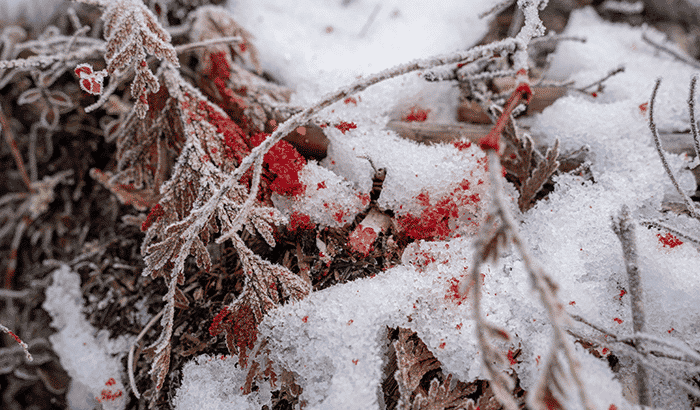Did you know that blood trailing and game recovery take as much skill and practice as preseason scouting, getting in shape, and perfecting your shot?
You’ve spent countless hours finding the ideal hunting spot, scouting the game, setting up camp and blinds, and waiting for the perfect opportunity to land that trophy animal. At last, you pull the trigger and successfully shoot your harvest. It takes off running, and now what? If your shot is not immediately fatal, what you do next is crucial in recovering the animal.
Continue reading to learn what to do next.
5 Blood Trailing Tips You Need to Know
1.Assess What Happened — If your target takes off running after being hit, take a moment and assess what happened. After you shot the animal, what did it do? How did it respond to the impact? Did it jump up and bolt, or did it stagger around for a bit? Was it moving quickly or slowly? Where were you aiming, and where was the animal hit? Answer carefully because how you track a deer shot in the lungs or heart is different from tracking one with a gut shot. The more accurate you are, the easier it will be to locate it.
2.Slow Down — It’s common for hunters to attempt a hasty follow-up shot or prematurely begin tracking injured game. Depending on where it was shot, it can take anywhere from a couple of minutes to a couple of days for an animal to die. If you get out of your hiding place, you could spook and push away the animal if it is still able to run and hide.
3.Get Tracking — Now that you have a good understanding of the hit, it’s time to start tracking. Your first step should be to study the area directly in front of you. Mark each site you find that has blood or other signs of the animal, such as fur or hoof prints. It is common to do so with some orange flagging tape (that you’ll later remove). Take notice of the blood flow; is it increasing, staying the same, or decreasing? Mark every spot and look back to check for a pattern.
4.Don’t Lose Hope — You may hit a point in your search that leads nowhere. That’s often when the frustration creeps in. Just try to remember that the animal didn’t disappear into thin air. It’s out there somewhere, so fully commit yourself to its recovery.
5.Go Back and Try Again — If your track goes cold, go back to your last orange tag and ask yourself, “What are the facts telling me?” Don’t look for what you want to see; look for what actually happened. If you cannot reveal anything new, create a grid, which will leave no area unturned. Go to your last marked area, thoroughly comb the space, move a few yards forward, then to the left, and then to the right. Do this until you’ve searched everywhere. Eventually, you’ll find a clue that successfully moves you forward.
Book Your Next Hunt with the Pros at The R & K Hunting Company!
For more insider tips and tricks like these blood trailing pointers, book your next hunt with the hunting experts at The R & K Hunting Company. Our skilled guides have decades of experience hunting in the Rocky Mountains of Wyoming and Utah and want to share their knowledge. Our team takes the hassles out of planning a hunt and will plan a hunt you will never forget. Contact us to book your next hunt now!

